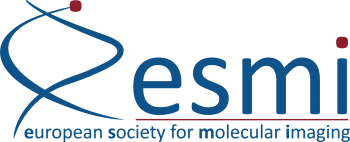Imaging the Developement
9th Winter Conference of the European Society for Molecular Imaging – EMSI
Thanks for a great Winter Conference on “Imaging the Development”.
Exciting 5 days in Les Houches brought together, possibly for the first time, a group of imaging physicists, imaging experimentalists, mathematicians, computer scientists and developmental biologists, to discuss one of the greatest wonders of life, namely the development of a complex organism from a single fertilized egg.
The complex forces that govern development include precise three-dimensional temporal regulation of gene expression and cell migration, to form tissues and organs at the correct place and time. Understanding development challenges the capabilities of imaging technologies, with its demands for precision, spatial resolution, multiplexing of information and rapid temporal changes. These challenges are further amplified by the need for increasing throughput of image acquisition, to accommodate for large screening programs of genetic modifications.
Fruitful discussions delineated the similarities and differences between physiological morphogenesis and cell behavior in pathological processes including cancer. Remarkable insight can be gained by comparing embryos of different species spanning from zebrafish and birds to rabbit, mice and human. Clearly the challenges for imaging mammalian embryos are particularly demanding where development outside the uterus is limited. Dynamic analysis of development poses one type of technological challenge. Cutting edge 3D light Sheet microscopy demonstrated remarkable capabilities for live imaging and dynamic analysis of cell migration paths for the early stages of development, while OCT and in utero ultrasound and MRI allowed in vivo monitoring of un-perturbed pregnancy albeit at considerably lower spatial resolution.
The second type of challenge is high throughput imaging based screening of genetically modified or drug treated embryos. Large scale morphometric phenotyping was demonstrated with CT, OPT and MRI, each with its optimal window during different stages of development, resulting in anatomical atlas type data, made useful by the development of powerful analytical tools for un-biased mapping of phenotypic changes.
So what imaging advancements are required in order to make further significant impact?
In order to evaluate the needs it is important to reflect on the primary biological questions. For example:
- When and how does cell specification start? How organs are shaped and structured?
- When do senses (e.g. hearing) and awareness start?
- What is the relation between genotype and phenotype?
- How do (micro)environmental effects influence phenotype?
Addressing these issues has become possible because of huge progress in physics and instrumentation technology that provide sharper, real-time images without physiological interference. Physics and mathematics have also invaded the theoretical aspect of developmental studies. For instance, mathematical models have demonstrated that developmental scenarios cannot avoid stochasticity. Indeed, however powerful genetic determinism may be, both as a tool in experimental embryology and as a conceptual framework for evolution, alone it is unable to predict the building of an adult phenotype. Models are too sensitive to unstable cell-cell and cell-environment boundaries to be purely deterministic; therefore, random functions must be introduced in the equations describing cell-to-tissue organization. It is fascinating to see how, by a sort of return of the old gradient theories, long distance interactions in space and time and reaction-diffusion processes are increasingly called upon in order to describe the development of organisms.
These questions clearly carry also ethical weight. Thus an evening session was devoted for discussion of ethical aspects of these scientific endeavors. Assisted by historical perspective, a lively discussion focused on the role and responsibilities of the scientists in the potential use of the increased technological capabilities.
Although not included in this TOPIM meeting, the clinical potential and health benefit of imaging of development is profound. Imaging technologies can affect the efficacy of assisted reproduction programs (such as IVF), prenatal fetal monitoring and monitoring of high-risk pregnancies. Furthermore, it is well known that adverse effects during pregnancy have long term and significant impact on adult life health.

TOPIM 2014 was supported by the FP7 project INMiND – Imaging of Neuroinflammation in Neurodegenerative Diseases.
TOPIM 2014

Date: January 19-24, 2014
Venue: École des Physique des HouchesFrance
TOPIM 2014 documents
Invited speakers and talk titles
The programme started on Monday morning with the Introductory Keynote Lecture by Lee Niswander from Denver entitled “Imaging of Development: an Overview of Dynamic Embryonic Events with a focus on Central and Peripheral Nervous System Development” – thanks for this great lecture and all your efforts!
Special thanks also to Pierre-Henri Gouyon from the Muséum national d’histoire naturelle de Paris and his inspiring and thought-provoking contribution on “Ethical considerations”.
Further invited speakers and talk titles:
- Lee Adamson – Toronto, Canada
- “Imaging the developing cardiovascular system in mice“
- Yohanns Bellaïche – Paris, France on
- “Multiscale Imaging and quantification of tissue morphogenesis: from gene to forces”
- Peter Carmeliet – Leuven, Belgium on
- “Targeting endothelial metabolism : principles and strategies”
- Mary Dickinson – Houston, USA
- “Imaging vessel remodeling at the micro-scale during development: implications for tissue engineering and understanding congenital disease“
- Peter Friedl – Nijmegen, The Netherlands on
- “Preclinical intravital microscopy of the tumour-stroma interface: invasion, metastasis, and therapy response“
- Mark Henkelman – Toronto, Canada on
- “Essential Genes for Development: Imaging of Mouse Embryonic Lethals”
- Thomas Mathivet – Leuven, Belgium
- “Branch or Expand? New insights into Dll4/Notch dynamics driving vascular patterning“
- Michal Neeman – Rehovot, Israel on
- “Imaging vascular remodeling in reproduction and development“
- Nadine Peyriéras – Gif-sur-Yvette, France
- “Reconstructing multi scale in vivo imaging data by multilevel dynamics”
- Mickael Tanter – Paris, France on
- “Ultrafast Ultrasonic Imaging : from Shear Wave Elastography to Functional Imaging of the Brain Activity”
- Daniel Turnbull – New York, USA on
- “In Vivo Imaging of the Developing Mouse Brain: From Morphology to Molecules“
- Magdalena Zernicka-Goetz – Cambridge, UK on
- “Pattern formation and tissue morphogenesis during mouse embryogenesis“
TOPIM 2014 Committee
- Bertrand Tavitian – Paris, France CHAIR
- Michal Neeman – Rehovot, Israel
- Vasilis Ntziachristos – Munich, Germany
- Nadine Péyrieras – Gif sur Yvette, France
- Andreas Jacobs – Muenster, Germany
